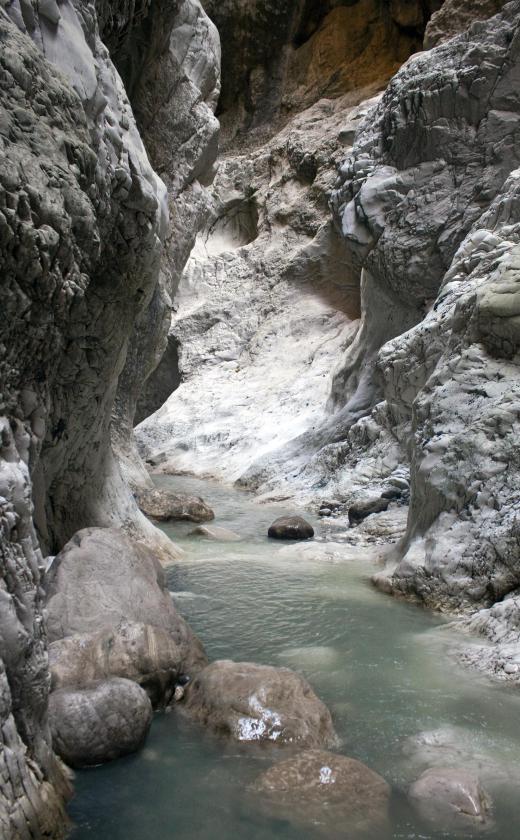Which Animals Live in Caves?
 Michael Anissimov
Michael Anissimov
Numerous animals live in caves, either exclusively or part of the time. Troglobites — not to be confused with troglodytes — are animals that live their entire lives in the dark part of caves, troglophiles are animals that sometimes occur outside a cave, but mostly deep in it, and trogloxenes are animals that are capable of surviving inside caves but are mostly found outside of it, like the extinct cave bears. Stygobites are animals found in groundwater in or between caves. True troglobites lack functional eyes. Their eyes may be vestigal, covered beneath a layer of skin. Exclusive cave animals are called caverniculous.
Some animals that live in caves include salamanders, the Cave Dwelling Rat Snake, many fish, bats, and many arthropods, including insects, millipedes, harvestmen, crayfish, springtails, spiders, etc. Smaller fauna are numerous, as their energy needs are less than large animals, and include cave-exclusive annelids, leeches, mollusks, mites, etc. Many troglobites have slow metabolisms to account for the scarcity of food in caves.

Animals that spend a lot of time in caves eventually evolve exclusive adaptations to survive the extreme environment, such as better hearing at the expense of sight, or the ability to sense delicate vibrations. Many animals that live in caves lose their pigment, becoming ghostly white, as the signaling role of pigmentation in useless in a pitch black environment. Lack of functioning eyes is also accompanied by the extension of limbs and antennae in insects, which are used to survey the environment through tactile means. True cave insects also have either reduced or absent wings.

The cave environment is distinguished by negative characteristics: a lack of distinction between night or day, summer or winter. There is little change in temperature or humidity, though cool air currents do flow through most caves. Food can only come in through the outside, either living, in the form of animals seeking refuge, or dead, by organic material carried in through streams. Fungi feeds on this organic matter, and numerous animals in turn feed on the fungi. Butterflies that hibernate in caves are frequently eaten by grasshoppers, which are in turn eaten by bats.
Many cave animals are endemic to the cave in which they are found, which in some cases may only span a few square miles. There are likely many more cave animals waiting to be discovered.
AS FEATURED ON:
AS FEATURED ON:














Discussion Comments
And now I'm envisioning huge albino spiders with withered-away eyes and extra long legs...
But seriously, very good article. I was googling "do bears live in caves" and came up with this, which gave me more info than I could have hoped for.
Thanks!
How would you say that the ecological populations differ between different kinds of caves?
For instance, would those animals in limestone caves differ from those found in solution caves, or are all underground cave creatures kind of the same?
For instance, I could imagine those creatures living in caves of limestone adapting specific traits to deal with the crumbly nature of the limestone versus those living in solution caves being more adapted for acidic/alkaline environments, depending on the nature of the cave.
Would this be correct, or am I mistaken?
Wow, I had no idea that so many different animals lived in caves. A buddy of mine has been trying to get me to go spelunking with him forever, and despite my insistence that I do not "spelunk", he finally talked me into it, so I thought I would look up a little info about caves.
Now I think I'm having second thoughts...maybe I'll just check out one of those caves hotels, and get the spelunking experience sans creepy albino animals and rampant insect populations.
Post your comments